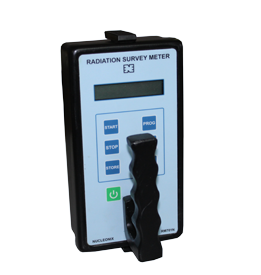How long corona virus survives on surfaces [ TYPE : Informative ]
Technical Data

Introduction:
Scientists from the National Institute of Allergy and Infectious Diseases, the Centre for Disease Control,(CDC) Princeton University, and University of California, Los Angeles, experimented with the SARS-CoV-2 virus under laboratory conditions to determine how fast virus particles broke down outside of a host body.
The coronavirus that causes COVID-19 mainly spreads from person to person. When someone who is infected coughs or sneezes, they send droplets containing the virus into the air. A healthy person can then breathe in those droplets. You may also catch the virus if you touch a surface or object that has the virus on it and then touch your mouth, nose, or eyes.
The study suggests that people may acquire the coronavirus through the air and after touching contaminated objects.
"This virus is quite transmissible through relatively casual contact, making this pathogen very hard to contain," said James Lloyd-Smith, a co-author of the study and a University of California, Los Angeles, professor of ecology and evolutionary biology. "If you're touching items that someone else has recently handled, be aware they could be contaminated and wash your hands.".
The study attempted to mimic the virus being deposited onto everyday surfaces in a household or hospital setting by an infected person through coughing or touching objects, for example.
People infected with the virus — officially named SARS-CoV-2 — may be spreading the virus without knowing they have it or before symptoms appear. Lloyd-Smith said the biology and epidemiology of the virus make infection extremely difficult to detect in its early stages because the majority of cases show no symptoms for five days or longer after exposure, scientists then investigated how long the virus remained infectious on these surfaces.
How does the virus that causes COVID-19 compare with other corona viruses, and why are we seeing so many more cases?
SARS-CoV-2 behaves like a typical respiratory coronavirus in the basic mechanisms of infection and replication. But several mutations allow it to bind tighter to its host receptor and increase its transmissibility, which is thought to make it more infectious.
The New England Journal of Medicine study suggests that the stability of SARS-CoV-2 is very similar to that of SARS-CoV1, the virus that caused the 2002-2003 SARS global outbreak. But researchers believe people can carry high viral loads of the SARS-CoV-2 in the upper respiratory tract without recognizing any symptoms, allowing them to shed and transmit the virus.
Coronavirus: What you Need to Know:
The coronavirus can live for hours to days on surfaces like countertops and doorknobs. How long it survives depends on the material the surface is made from.
Different Kinds of Surfaces
| Aerosol | Scientists discovered the virus is detectable for up to 3 hours in aerosols |
|---|---|
| Metal | Examples: doorknobs, jewellery, silverware 5 days |
| CGlass & Ceramics | Examples: drinking glasses, measuring cups, mirrors, windows, dishes, pottery, mugs Up to 5 days |
| Paper | Examples: mail, newspaper The length of time varies. Some strains of coronavirus live for only a few minutes on paper, while others live for up to 5 days. |
| Wood | Examples: furniture, decking 4 days |
| Plastics | Examples: milk containers and detergent bottles, subway and bus seats, backpacks, elevator buttons 2 to 3 days |
| RStainless steel | Examples: refrigerators, pots and pans, sinks, some water bottles 2 to 3 days |
| Cardboard | Examples: shipping boxes 24 hours |
| Copper | Examples: Coins, cookware 4 hours |
| Aluminium | Examples: soda cans, tinfoil, water bottles 2 to 8 hours |
| Food | Examples: takeout, produce Coronavirus doesn't seem to spread through cooked food. |
| Water | Coronavirus hasn't been found in drinking water. If it does get into the water supply, your local water treatment plant filters and disinfects the water, which should kill any germs. |
| Fabrics, On Clothes, linen | There’s not much research about how long the virus lives on fabric, but it’s probably not as long as on hard surfaces. Well, as suggested by an article in New York Times by Tara Parker- Pope who talked to an aerosol scientist and a paediatric infectious disease specialist, it could be cardboard because both can consist of fibres that absorb moisture. The virus needs some moisture to survive. Without it, the virus can quickly dry up and no longer be viable. So, should you assume that the virus can survive on your clothes for up to 24 hours? Maybe. Perhaps. Keep in mind that clothes aren’t necessarily all fabric. They may have metal or plastic parts like buttons or clasps. That’s certainly the case if your clothes have giant plastic windows on them. In theory, the virus could survive longer on less absorbent portions of your clothes. |
| Shoes | One study tested the shoe soles of medical staff in a Chinese hospital intensive care unit (ICU) and found that half were positive for nucleic acids from the virus. But it’s not clear whether these pieces of the virus cause infection. The hospital’s general ward, which had people with milder cases, was less contaminated than the ICU. |
| Skin and hair | There’s no research yet on exactly how long the virus can live on your skin or hair. Rhinoviruses, which cause colds, survive for hours. That’s why it’s important to wash or disinfect your hands, which are most likely to come into contact with contaminated surfaces. |
| Coronavirus survival by surface | “The virus typically doesn’t like to live on surfaces that have a lot of holes or microscopic little grooves, nooks or crannies,” explains Dr. Esper. “It likes surfaces that are very smooth, like door knobs. “Early research has demonstrated that the virus’s survival depends on the type of surface it lands on. The live virus can survive anywhere between three hours and seven days, depending on the mate |







